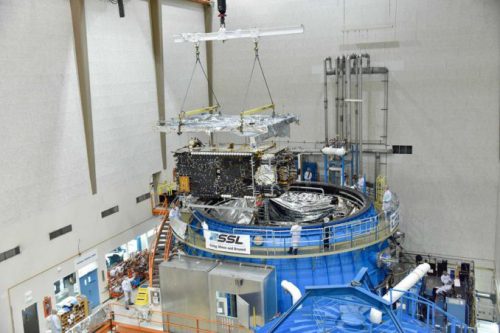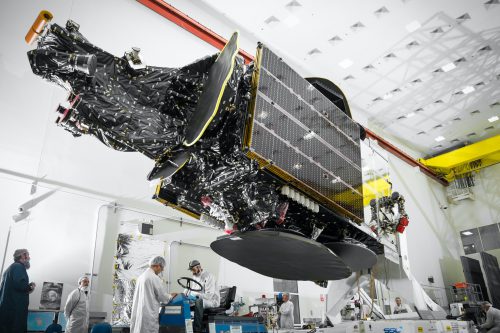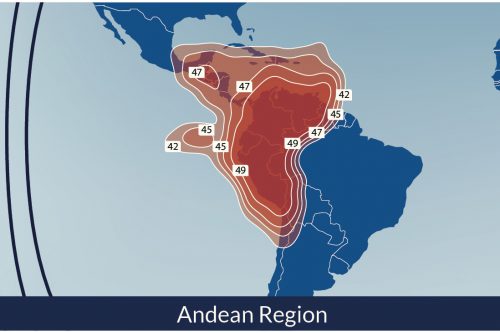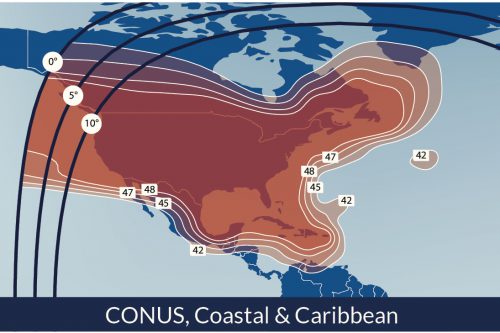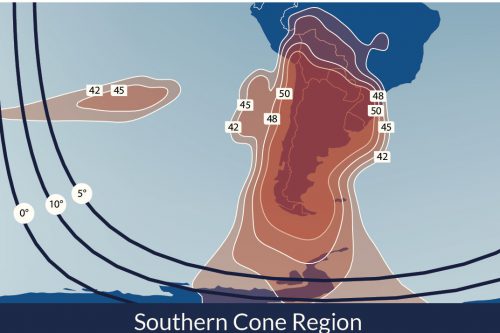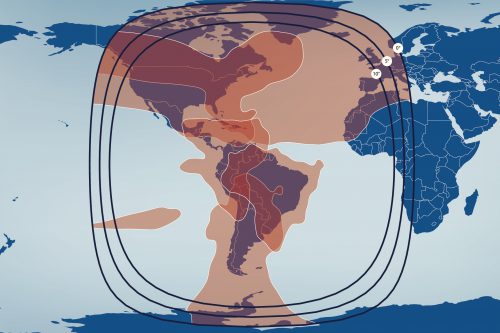
Back to selection
GEO Satellite
Telstar-14R/Estrela do Sul 2 GEO
succesfull
Launch date
20 May 2011
Dedicated Mission
Country

Purpose
Communication
Position
63° West
Manufacturer
Operator
Launch operator
Launch vehicle
Proton M/Breeze
Expected lifetime
12 Years
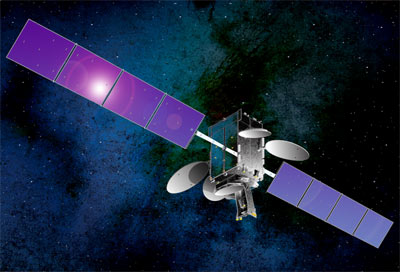
Regions
North America Region
South America Region
Telstar 14R/Estrela do Sul 2, built by Space Systems/Loral (SS/L), will replace Telstar 14/Estrela do Sul 1 at its 63° West orbital location. The satellite will have five coverage beams with 46 active transponders, of which 27 will be fixed and 19 will be switchable, covering Brazil, the Continental United States (including the Gulf of Mexico and northern Caribbean), the Southern Cone of South America, the Andean region (including Central America and southern Caribbean), and the North and Mid-Atlantic Ocean. The satellite’s Atlantic beam will expand on the coverage of the Atlantic Ocean Region capacity of both Telstar-14 and Telstar-11N, and secure Telesat’s position as a leader in mobile broadband for maritime and aeronautical customers operating in the Atlantic.
Telstar-14R will utilize the proven SS/L 1300 platform and will have a 15 year mission life and a launch mass of approximately 5,000 kg. Total spacecraft power will be approximately 11kW. An important advantage of the satellite’s design is that Telesat will have the capability to switch amplifiers to different regions resulting in flexibility to match satellite capacity to market need.
Telstar 14R was launched on May 20th, 2011 on a Proton-M Briz-M rocket operated by launch operator ILS. The satellite failed to deploy the north solar array. It was unclear, if the panel could finaly be deployed, but the satellite operated with reduced capacity with the jammed array.
Telesat was able to use 60% of its capacity and operated the satellite for 12 years in orbit despite the problem. However, Telstar-14R offered 20% more capacity than the original Telstar 14/Estrela do Sul.
GEO Satellite
Telstar-14R/Estrela do Sul 2
succesfull
GEO Satellite
Telstar-14R/Estrela do Sul 2
succesfull
GEO Satellite
Telstar-14R/Estrela do Sul 2
succesfull
